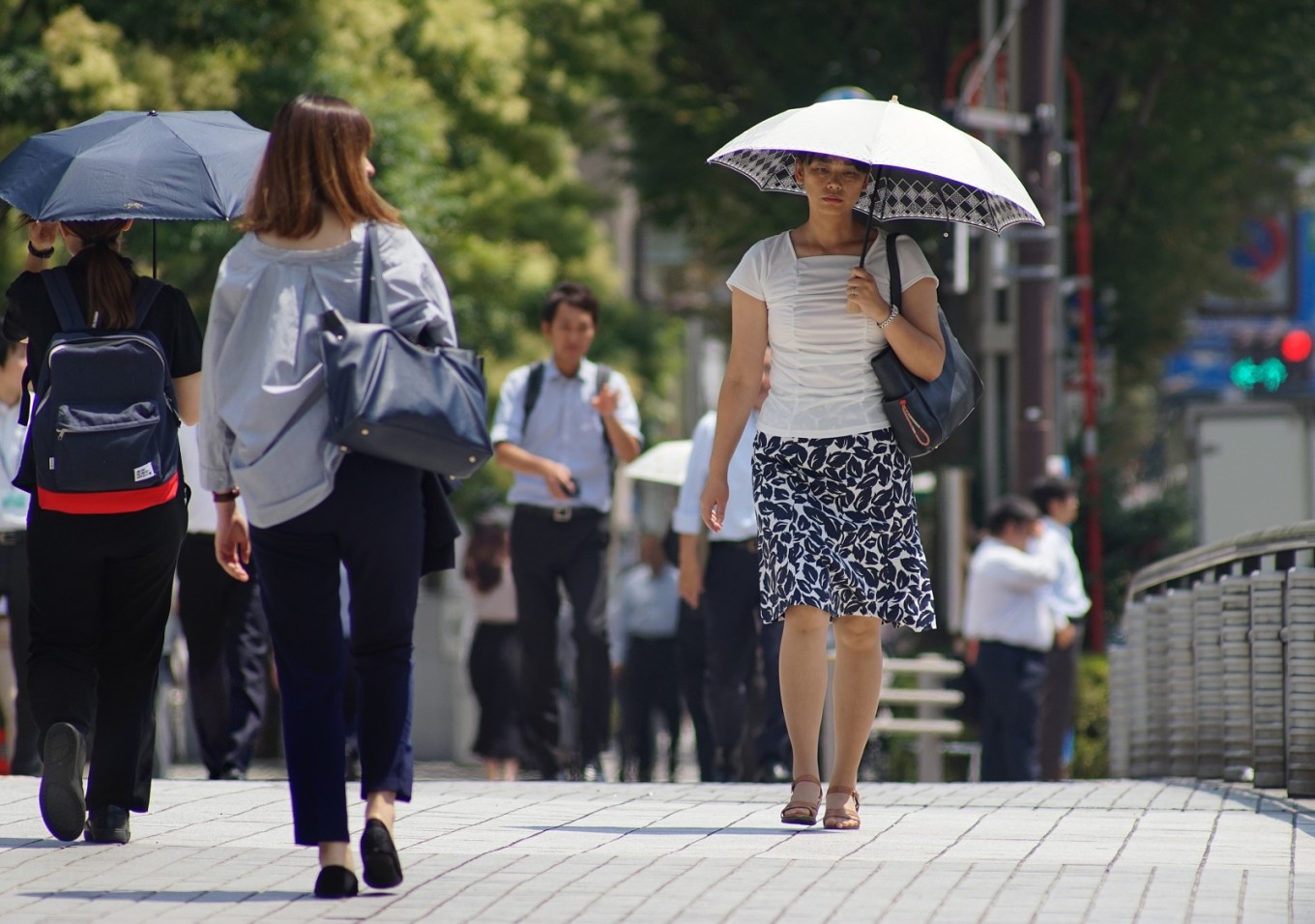Popular Reads
Top Results
Can't find what you're looking for?
View all search resultsPopular Reads
Top Results
Can't find what you're looking for?
View all search resultsSweltering Tokyo braces for approach of Typhoon Shanshan
Change text size
Gift Premium Articles
to Anyone
T
yphoon Shanshan is set to approach the Tokyo area later this week, bringing heavy winds and strong rains to a region suffering from a sweltering heatwave.
Shanshan, the 13th tropical storm of the season, is projected to track over the next two days toward the the Kanto area, where Tokyo is located. If the storm continues on its current path, it’s likely to disrupt Tokyo commuters midweek and bring heavy rains as soon as Tuesday.
The Japan Meteorological Agency’s current five-day projection indicates the typhoon may make landfall near Tokyo, and has the typhoon then turning northeast. Shanshan is currently located about 1,150 kilometers (715 miles) southeast of Tokyo, moving north-northwest at 20 kph (12 miles an hour).
The tropical storm is carrying sustained wind speeds of 126 kilometers per hour (78 mph), which are expected to increase to 144 kph (89 mph) as it approaches Japan. That makes it a “strong” typhoon, the second-weakest on the JMA’s four-point scale, or the equivalent of a Category 1 hurricane on the Saffir-Simpson scale.
Read also: Japan heat wave pushes temperature to record high 41.1 degrees
Shanshan is the latest extreme weather phenomenon to beset Japan. A heatwave has brought the hottest July on record to much of the country, with the mercury hitting a record 41.1 degrees in one city about 90 minutes from Tokyo. The heat has been so severe, killing more than 100 and hospitalizing tens of thousands due to heatstroke, that it has led Japan to consider the introduction of summertime for the Tokyo Olympics to be held two years from now.
Earlier in the month, record rains in the western part of Japan killed more than 200 people, with transportation links in many areas yet to recover.
Tropical cyclones are common throughout the summer in Japan. Typhoon Jongdari was the first to make landfall this year, with damage limited despite passing over the areas already hit by record flooding. Typhoon Wipha in 2013 was the strongest storm to approach the Kanto region in recent years, killing 40.







